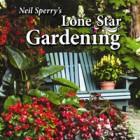Duranta
The genus Duranta contains around 30 species of tropical trees and shrubs, some regionally cultivated as ornamentals. The species most cultivated of these is D. erecta, commonly called golden dewdrop or Brazilian sky flower.
This quick-growing shrub-like plant, with dense, somewhat evergreen foliage, features lilac or sometimes white-colored flowers. Blooms are followed by a profusion of bright yellow berries. Renewal pruning is needed occasionally to maintain a dense, manageable form.
A yellow-variegated cultivar called ‘Gold Edge’ is available, as well. Its brightly glowing gold-and-green-variegated foliage provides a strong contrast to other plants. ‘Gold Edge,’ however, rarely blooms or sets fruit, but its foliage is the main attraction anyway.
Durantas have the ability to tolerate sun or shade but bloom best in full sun. Variegated types, such as ‘Gold Edge,’ however, perform best in partial shade.
Duranta can be used as a summer annual for late season color or perhaps in patio containers. It is a perennial in Zone 9, along the coast or in deep South Texas. In addition to tolerating sun or shade, duranta actually prefers for heavy soils. It also attracts birds, which feed on the fruits, and it is one of the few flowers that attracts both hummingbirds and butterflies.
Plants are somewhat resistant to disease and insect attack, but scale insects, caterpillars and nematodes can be occasional pests. Duranta is easily propagated from softwood cuttings.
Most cultivars of this species have a dark-blue stripe in the center of each flower petal, but different selections may have darker or lighter flowers. Cutting-grown selections of this species include D. erecta ‘Sky Blue,’ which has light-blue flowers and a dense, compact habit; D. erecta ‘Royal Blue,’ has dark-blue flowers and is also very compact. This cultivar is by far the heaviest berry producer, which enhances its value as an ornamental.
These days, many gardeners want Texas-tough SuperStar™ plants that live a long time without much maintenance. For something that is “old-yet-new,” easy and showy, why not try duranta?
About the author: Dr. Jerry Parsons is a Professor and Horticulture Specialist with the Texas A&M Cooperative Extension in San Antonio.

